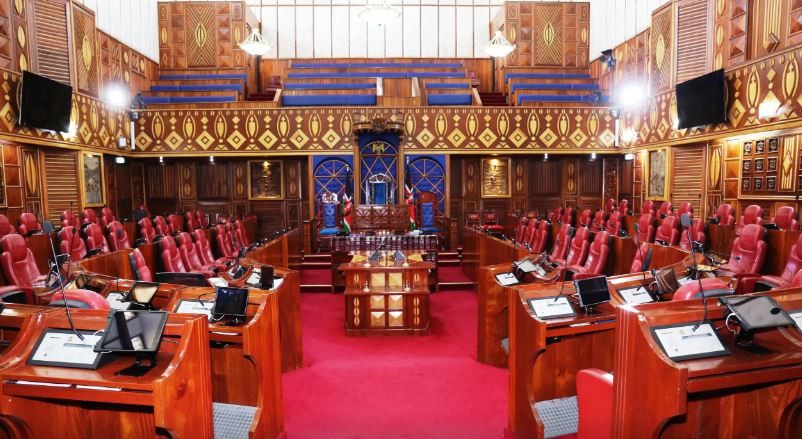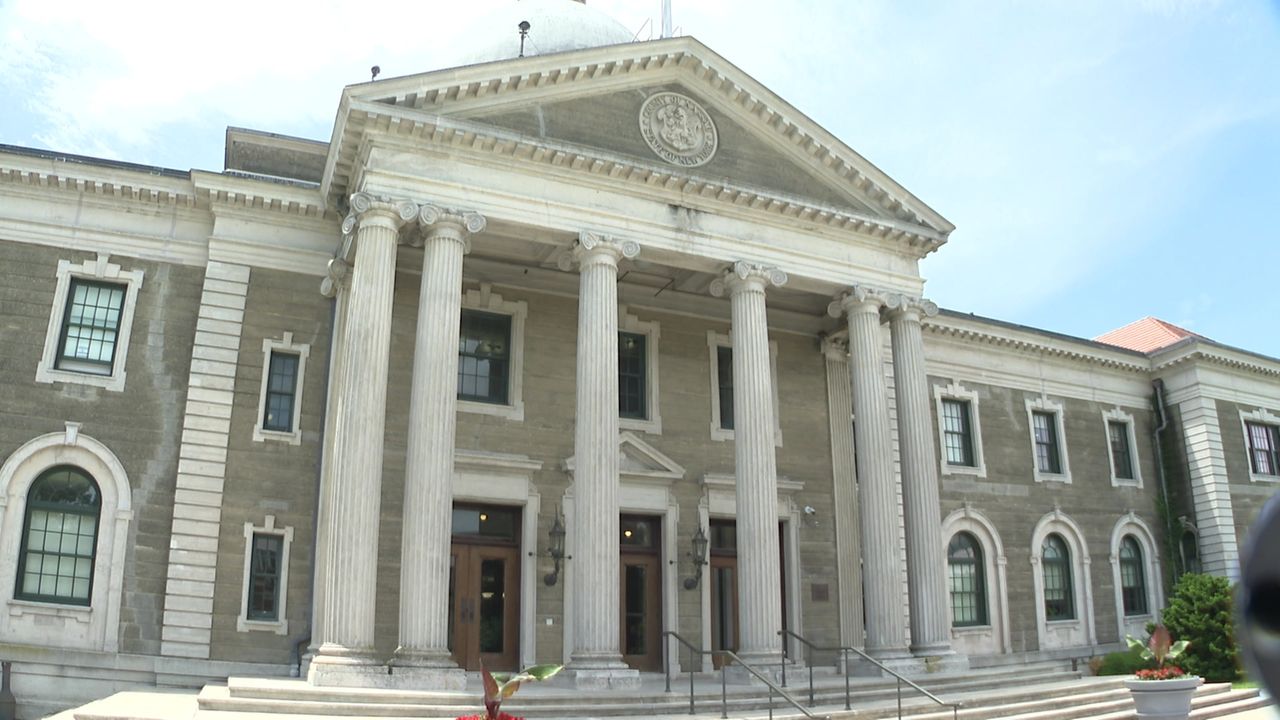Nearly twice as many Nassau employees made more than $300G in 2024, Newsday analysis finds
This story was reported by , and Joe Werkmeister. It was written by Ostadan and Werkmeister.
The pool of Nassau County employees making more than $300,000 nearly doubled last year, after Suffolk County saw a similar spike the year before, a Newsday analysis found.
A group of 178 current Nassau employees took home between $300,000 and $457,000 last year, up from 91 the year before. A small group of correction officers and a handful of police lieutenants working more overtime drove the increase, shifting costs onto taxpayers as Long Island leads the state in its share of high-earning government employees.
Suffolk saw a similar trend in 2023, when 258 employees made more than $300,000 versus 81 the previous year — in part because of employees raking in overtime as law enforcement agencies faced understaffing challenges, union leaders said. Nearly 240 Suffolk employees made more than $300,000 in 2024.
Newsday conducted this analysis using county payroll data obtained through a public records request and focused mostly on current employees — nearly 12,000 in Nassau and 11,000 in Suffolk — excluding retirees who are still getting paid out. In one case, a Suffolk deputy sheriff made more than 2.5 times his base pay in overtime, bringing home a total of $428,000.
Abdullah Ar Rafee, data manager for the Empire Center for Public Policy, a fiscally conservative think tank based in Albany, said "ironclad" union contracts drive higher pay in Nassau and Suffolk. Such contracts are "cause for concern" when they make local budgets inflexible and limit spending on other essential services, he said.
"Rising tax burdens, while services remain the same, is making New York unattractive for taxpayers," Ar Rafee said.
Of the $1.25 billion Nassau County spent last year on employee salaries, the police department accounted for 47%, or $584 million — more than the salaries for almost every other department in the county combined.
Nassau’s police salary budget saw one of the smallest relative increases of any department last year. But its 4% increase — about $23 million — translates to almost the entire payroll of Nassau’s health department.
Tommy Shevlin, president of the Nassau County Police Benevolent Association, did not answer specific questions about an increase in law enforcement officers making more than $300,000, but said in a statement to Newsday that "our police officers are not numbers on a spreadsheet."
"They are public servants who risk their lives every single day," he wrote. "Public safety isn’t guaranteed — it’s earned daily by officers who face threats so others can live in peace. We owe them not just our respect, but our full support."
About 70% of Nassau employees making more than $300,000 work for the police department, and another 29% work for the Correctional Center. On average, they had a base salary of $166,000 and $130,000 in overtime, holiday and comp pay.
Four Nassau employees last year made more than $400,000, three at the Correctional Center and one in the police department.
In Suffolk, nearly 95% of employees making more than $300,000 work for the police department. Another 5% work for the sheriff’s department, and three outliers work for the district attorney’s office.
Nearly half of Suffolk County’s payroll — $562 million — went to its police force in 2024. That translates to more than double the combined salary budgets for the county’s executive office, social services, public works department, health, probation, parks and fire departments.
Six Suffolk employees took home more than $400,000 last year, three in the police department and three in the sheriff’s department.
Lou Civello, president of the Suffolk Police Benevolent Association, said salaries for officers are an "investment in public safety" and qualified, well-trained officers "cost money."
Recruitment and retention have been a challenge as the "job has gotten exponentially more difficult," coupled with rising living costs on Long Island, he added.
Pete Lilli, president of the Nassau County Sheriff’s Correction Officers Benevolent Association, agreed. "While we understand the media is always going to focus on dollars and cents, the public would be better served if more attention was paid to the enormous challenges correction officers face on a daily basis, including significant staffing shortages," he wrote in a statement to Newsday.
Nassau County spent roughly $153 million on overtime pay last year. About 55% went to the police department, and another 28% to the Correctional Center. The county spent an additional $29 million in holiday and comp pay, cash paid out to those who worked extra hours.
A group of 33 of Nassau’s 600 correction officers took home more than $300,000 last year. They made an average $188,000 in overtime, holiday and comp pay, on top of a $131,000 base salary. Those 33 officers combined made $6.2 million in overtime.
More than half are eligible to retire now or within the next three years — and their pensions are typically calculated based on their last three years of pay.
"The big thing when salaries get this high is ‘pension-spiking,’ ” said David Schleicher, a professor at Yale Law School, referencing a practice in which government employees nearing retirement after 25 years of service inflate their final years of pay to get a larger pension.
Schleicher, who specializes in state and local finance, said, "These workers are about to retire, so they’re getting their salaries up."
"Senior officers tend to work more overtime than our junior officers and that’s nothing new," said Lilli.
Suffolk County spent about the same as Nassau in overtime at $147 million. About 51% went to the police department, followed by another 34% to the sheriff’s department.
Five Suffolk deputy sheriffs and two correction officers in the department recorded more than $200,000 in overtime. The top earner took home $289,438 in overtime, more than double his base pay of $115,993.
Suffolk sheriffs have also taken on more overtime-intensive jobs, such as enforcing "Extreme Risk Protection Orders," a court order that takes away someone’s gun when they’re deemed a danger to themselves or others, according to Victoria Distefano, spokeswoman for the Sheriff’s Department.
Nassau County spent more than $1 million last year on a lesser-common form of overtime: "missed meals." It’s a payout for union-protected meal breaks employees didn’t get during certain shifts, or for shifts they worked outside the Correctional Center where a meal wasn’t provided. A group of 24 correctional employees made more than $5,000 each last year for such meals.
"What we’re seeing across law enforcement in the New York City metro area is a much greater reliance on overtime," said Schleicher. “[Officials] are having trouble hiring at entry-level salaries ... So you’re paying more in overtime, which is more expensive if you’re paying high-level people. It’s a little bit of a false economy."
Researchers have warned against the risks of law enforcement officials working too much overtime, studying how physical and mental stress can cause police burnout. The U.S. Department of Justice found that fatigue contributed to officer-involved shootings and vehicle crashes involving police cars.
Chris Boyle, a spokesman for Nassau County Executive Bruce Blakeman, blamed the spike in those making top pay on the last administration for not hiring enough people in the police and correction departments.
"To remedy the situation, County Executive Bruce Blakeman has hired 300 new police officers and nearly 200 new correction officers. You will see fewer people making more than $300,000," Boyle wrote in a statement to Newsday.
Lilli said the county either mandates overtime or asks for volunteers.
"We are more than 125 officers under what is budgeted for ... Correction officer applicant pools are low and hiring is difficult at times due to low starting pay," he said, adding that Nassau gained no more than 20 correction officers last year.
Tom Bivona, president of the Suffolk County Deputy Sheriffs PBA, echoed Boyle and Lilli, claiming the "biggest issue" for several years has been an understaffed department, even as job responsibilities expand.
"The overtime issue is almost primarily due to staffing levels," he said.
Suffolk County Executive Edward P. Romaine’s administration has approved 30 new positions, but those deputy sheriffs won’t start training until the fall, Bivona said, adding that he expects a total of 45 new deputy sheriffs this year.
Suffolk County Correction Officers Association, a union representing about 860 officers, recently landed a new contract that boosts base pay and allows officers to reach top pay scales more quickly. Officials say it will help recruit and retain officers. The Suffolk Legislature could vote to approve the contract Tuesday.
Union president Lou Viscusi said the new contract should help boost the department’s staffing — which is currently 110 correction officers below what it needs — and drive down overtime costs. On Father’s Day, the department had 106 officers work 16 hours — overtime that was mandated, he said.
"We don’t want it," Viscusi told Newsday about the high spend on overtime. "We’d rather be home."
Romaine said in a statement his administration "inherited historic staffing shortages left behind by the prior administration."
"As promised, we have added police to keep our streets safer," he said.
Current salary rates have failed to keep up with inflation and made it harder to hire and retain employees, according to officials. But overtime spending for police has been "leveling out" as the department hires more people, a trend the county expects to continue, they said.
County employees who retired, quit or got fired last year made more money than current employees, in part due to their termination pay.
The highest-paid employee in Suffolk County, for instance, was a police inspector who retired in September and took home $713,000. After him, there was a police lieutenant who also retired in September and took home $707,000.
Nineteen Suffolk employees took home more than $500,000 — all members of the police department who retired last year. The year before, 24 employees eclipsed $500,000.
Suffolk’s police force has an older generation who’s retiring, explaining some of the high termination payouts, according to Civello, Suffolk’s PBA president.
Termination payouts can include unused sick time for a career that spans 25 or 30 years, he said. The payouts are "two for one," meaning the county saves money by paying employees for just half their unused sick days, Civello added.
The highest-paid current employee in Suffolk was a deputy sheriff who made $428,000. In fact, almost all of the highest-paid 2,600 employees in Suffolk work for the police department or the sheriff’s office.
In Nassau, every employee who made more than $500,000 was a police department employee who retired last year. Their termination payouts ranged from $336,000 to $602,000, bringing their total pay up to $724,000 in one case.
Nassau also paid Christopher Cizmarik, a police detective-lieutenant who died in 2023 from 9/11-related cancer, $524,000 last year. He started on Nassau’s police force in 1992 and served for 31 years.
Among the highest-paid current employees in Nassau were mechanics in the Correctional Center, one of whom made $343,000 last year. A carpenter in the Correctional Center made $299,000 last year.
Police medic coordinators made the most in extra income among high-paid police employees. One made $216,000 last year in overtime, holiday and comp time alone.
A greenskeeper for the Parks Department also topped the chart, bringing home nearly $320,000 last year.
Both Nassau and Suffolk counties have historically underbudgeted for overtime pay.
In a report by Suffolk budget analysts, the county was expected to need $125 million for overtime pay last year. The county ultimately spent $147 million on overtime.
"Overtime has increased significantly in recent years due to a high rate of employee turnover, increasing workload, and negotiated pay increases," Suffolk’s report stated.
Nassau County proposed $81 million for overtime last year. Its fiscal watchdog, the Nassau Interim Finance Authority, projected the county would need $101 million for overtime. Ultimately, Nassau spent $153 million, according to Newsday’s analysis.
The watchdog group noted that while overtime spending increases, the county saves money on "full-time [job] vacancies" that stay unfilled or get hit with hiring delays.
Ar Rafee, of the Empire Center, warned that increases in overtime spending — which hinge on union contracts — can put a financial strain on county budgets.
"The higher pay you see is kind of a product of how strong the [union] bargaining units are," he said.
Such was the case in 2000 when Nassau’s debt rose to $2.9 billion following years of runaway costs, according to research by Lillian Clayman, a labor history professor at SUNY Old Westbury who ran as a Democrat for Brookhaven Town supervisor in 2023.
Politicians gain power by satisfying union demands, Clayman said, describing the practice as "quid pro quo." Nassau and Suffolk unions are "very vocal about who they support and don’t support," she said.
"Any politician worth their salt who is looking for votes," she said, is going to support good union contracts.









